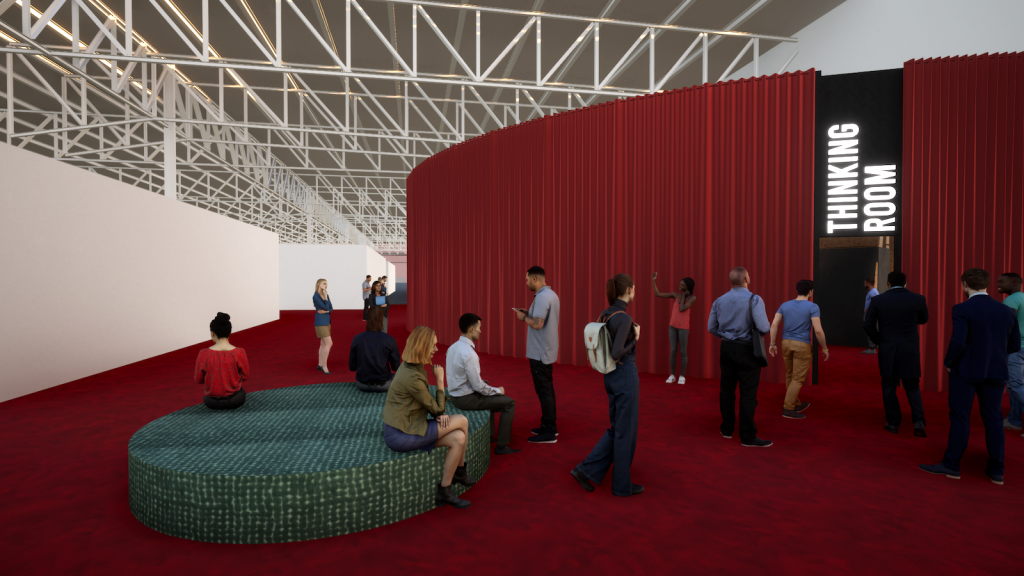Art Fairs
A Fantastical Installation by David Lynch Will Anchor the 2024 Salone del Mobile
"Interiors by David Lynch: A Thinking Room" will be encased in blue velvet, of course.

“Design and music, art and architecture—they all belong together.” So said revered multi-hyphenate creator David Lynch, and a new project at next month’s Salone del Mobile Milano promises to exemplify this commitment to the interrelation of the arts. “Interiors by David Lynch: A Thinking Room” premieres at the 62nd edition of the Italian furniture expo next month (April 16–21).
“Entering his Thinking Room will be like crossing the threshold of a room that is, in fact, another world, an inner space,” promised Salone president Maria Porro.
The filmmaker, artist, author, and musician is beloved for his feature films like Eraserhead (1977), Blue Velvet (1986), and Mulholland Drive (2001), as well as the Twin Peaks television miniseries (1990–91), all of which are known for settings that play crucial roles in developing the often-disturbing tales that unfold.
Publicity materials, as you might expect, make some seriously elevated (and lengthy) claims for the project, which is curated by Italian filmmaker and writer Antonio Monda and spreads over more than 500 square feet. It will provide “an original and metaphysical narration and reflection on the production of interiors and on how this is in a deep, sometimes symbiotic relationship with the interiority of those who buy these furnishings, not just for decorative reasons but because they are experienced as an external projection of the self,” according to the press release.

Rendering of “Interiors by David Lynch: A Thinking Room,” courtesy Salone del Mobile Milano.
The Thinking Room will be not just an experience of something outside the viewer but also “an inner region” that is “as unfathomable as every soul and as mysterious as the relationship between reason and fantasy,” say the organizers.
Apart from the sets in his works for the screen, Lynch has some history in the design world. He designed and constructed furniture for his 1997 film Lost Highway, and presented a furniture collection that year at the Milan Furniture Fair. He also conceived and co-designed a Paris nightclub, Silencio, which opened in 2011, inspired by the club of the same name in Mulholland Drive.
The publicity materials do reveal some specifics. To wit: a large wooden chair takes center stage. There are seven gilded cylinders. The ceiling is vaulted with metal tubes and apertures, such as windows and simple screens, onto the outside. All is encased in—wait for it—blue velvet.
Finally, a passageway leading to the installation, which is carried out in collaboration with scenographers from Milan’s Piccolo Theatre, is designed by Milan architecture firm Lombardini22, who described it a “a treasure box for a diamond.”





